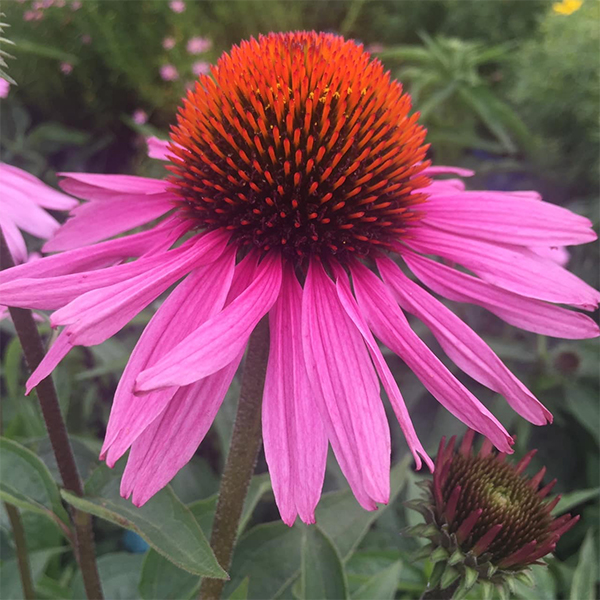
As the dog days of summer arrive, many of the perennials in our gardens can look colorless and worn out. However, many types of perennials can rebloom, and with a little attention and planning, the show can continue well into the summer.
Let’s start with daylilies. Traditionally daylily bloomed only once in the early part of the summer, but there are now “rebloomers” like ‘Stella d’Oro’ and ‘Happy Returns’ which produce continual flushes of blooms from early summer until fall. There are also many varieties like ‘Scarlet Orbit’ or ‘Strawberry Candy’ which will bloom twice a summer. Every year new varieties of reblooming daylilies become available. The key to keeping these plants blooming is to give them an occasional feeding and to keep them hydrated especially after their first bloom cycle has ended. Removing spent flower stems as well as older yellowing leaves not only keeps the plants looking tidy, but eliminates developing seed pods which will enhance the continued flowering of the plant.
Perennials such as coreopsis, nepeta and salvia will also bloom well into early fall. These plants need to have their spent blossoms removed. As the first flush of blooms seems to be waning cut the plants back by a third or a half. If the plants have splayed out or look exceptionally untidy they may even be cut right back to the new basal growth developing in the center of the plant. Again, these plants should receive an additional feeding and regular watering to produce the best results. It will usually take three or so weeks for the plants to size back up to a point where they can start blooming again.
Plants like scabiosa, prunella and echinacea need only be deadheaded, watered and fed to keep them blooming. The spent blossom should be cut back to where a new bud is forming, usually where a leaf is coming off the stem.
It will take some patience and nerve, but with experience it will eventually become evident what to remove.
If any of these plants are already in your garden, try these techniques to keep your plants blooming. If not, incorporating them into your garden can give your border a midsummer color boost. With a small investment of time, fertilizer and water you can be rewarded with a summer full of flowers.







